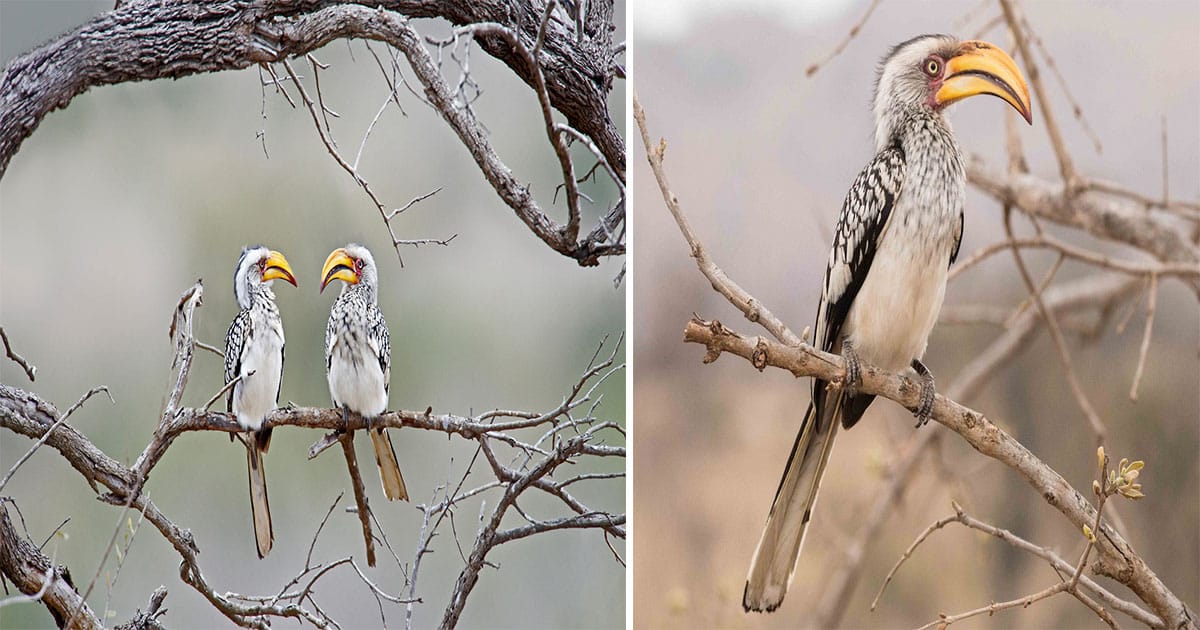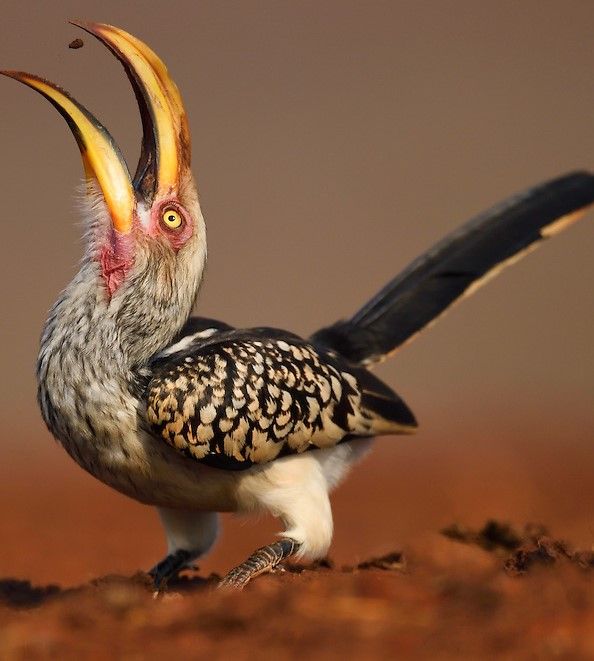
Have you ever heard of a bird that’s often described as the “Flying Banana”? Well, let us introduce you to the Southern Yellow-billed Hornbill (Tockus leucomelas), a remarkable avian species that stands out with its diagnostic yellow bill. Native to Southern Africa, this unique bird captures the attention of nature enthusiasts and birdwatchers alike.
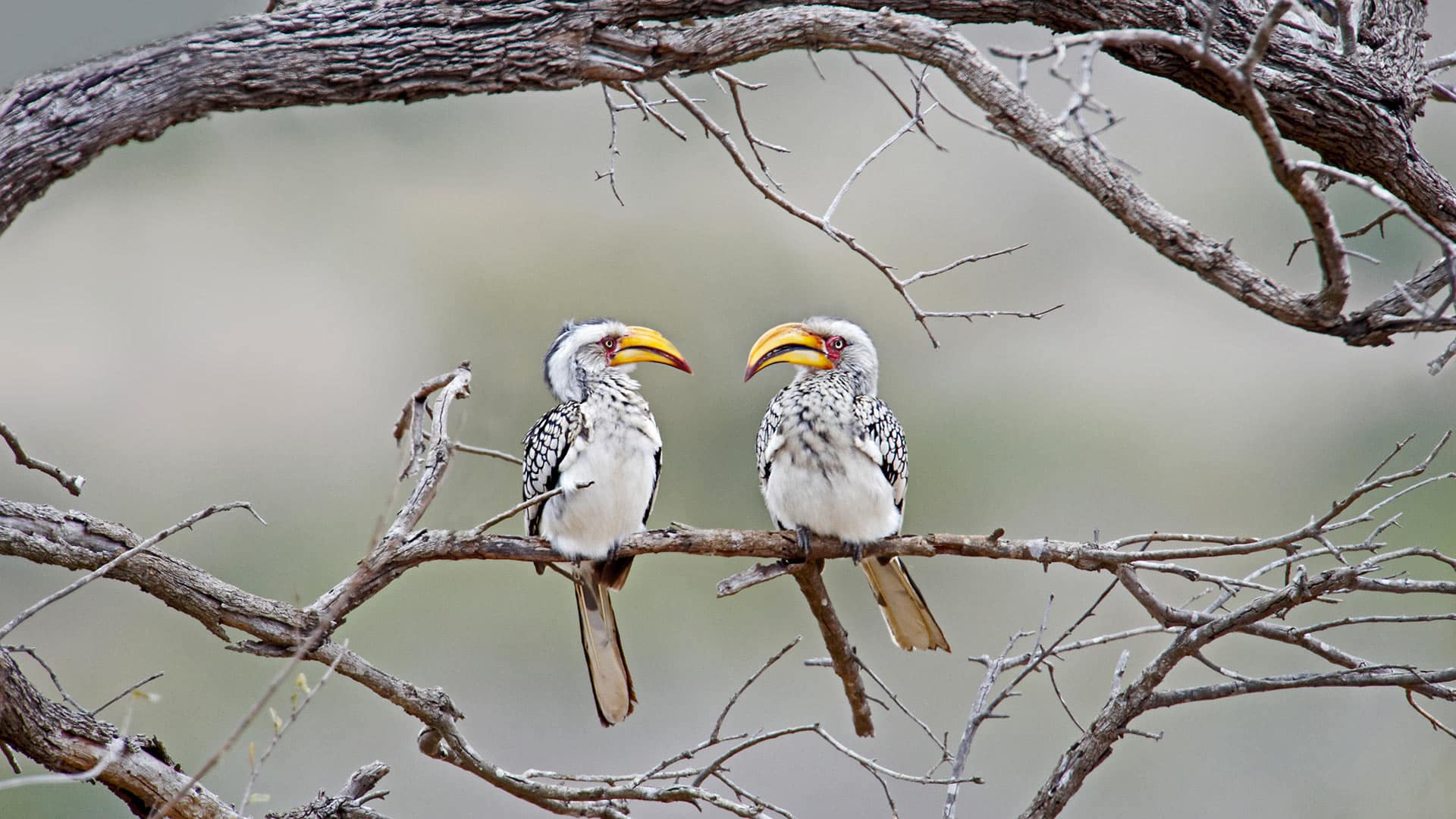
The Southern Yellow-billed Hornbill sports a distinct appearance. Males boast a casque, a prominent feature resembling a helmet, positioned above their long, decurved yellow beaks. Additionally, they display bare red skin around and below their eyes, as well as at the base of their bills. With their striking yellow eyes, dark grey forehead, and grey crown extending to the nape, these hornbills possess a captivating visage. Whitish head sides beautifully contrast with their predominantly black upper parts, which are heavily adorned with white scales on the wings. The back, rump, and long tail of this avian species are also black, while flight feathers exhibit a greyish brown hue with white edges. The underparts are paler, with a white-spotted dark grey neck and slightly streaked black upper breast. Notably, females can be distinguished from males by the absence of a casque on their beaks.
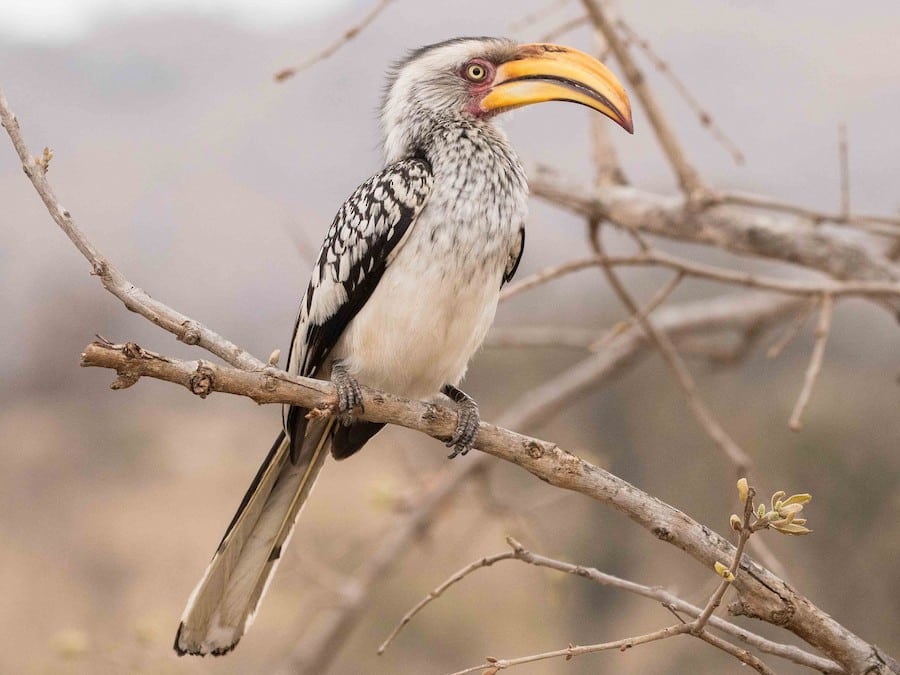
In their natural habitat, Southern Yellow-billed Hornbills inhabit dry thorn fields, deciduous woodlands, and scrubs. You may spot them hopping on the ground in a distinctive heavy manner. While they can exhibit a docile nature in parks and reserves, these birds are often seen along roads, catching the attention of passersby.
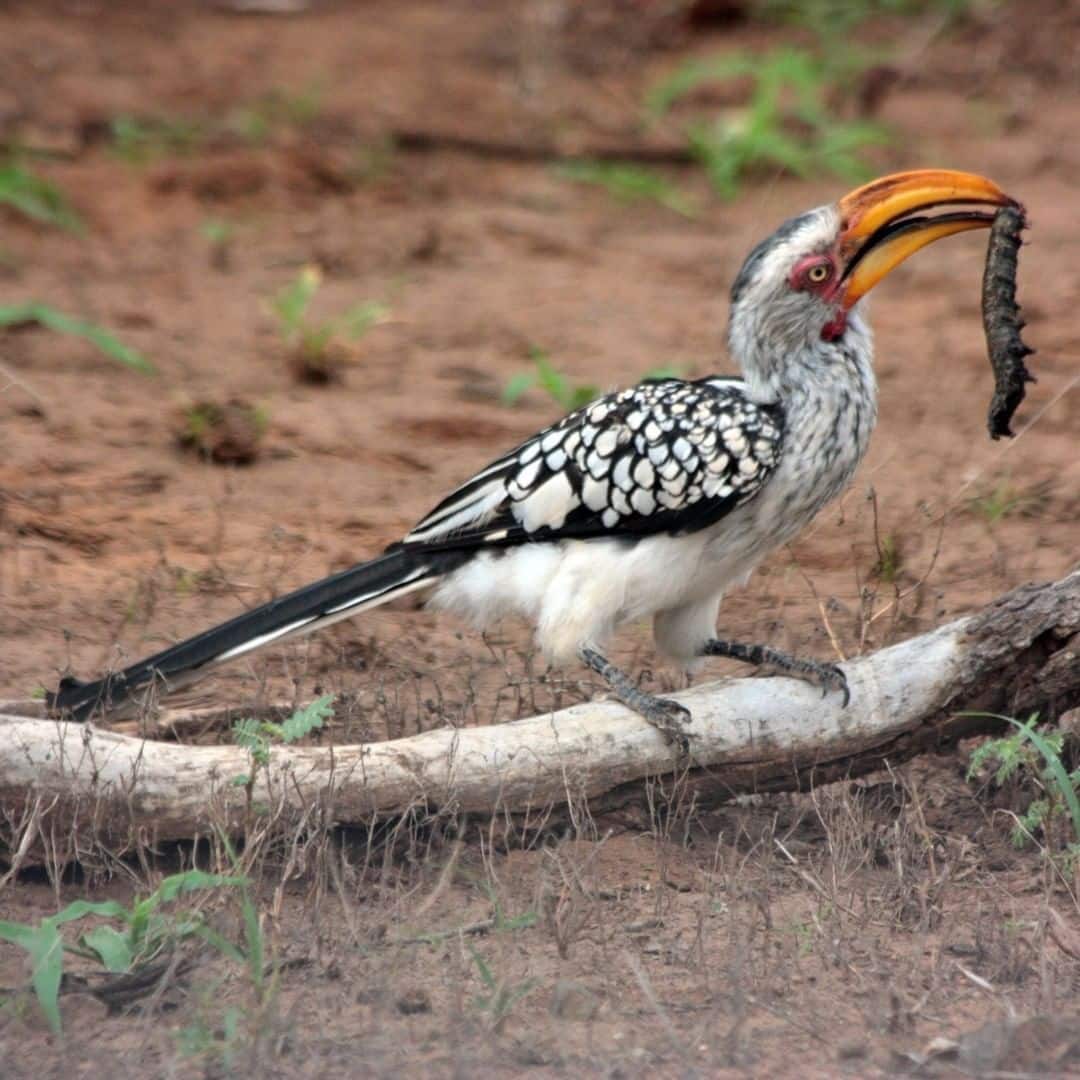
When it comes to their diet, Yellow-billed Hornbills have diverse culinary preferences. They enjoy feasting on insects, rodents, fruits, and seeds, as well as devouring snakes, lizards, and scorpions. Their adaptable palate allows them to thrive in their ecosystem and maintain a balanced ecological role.
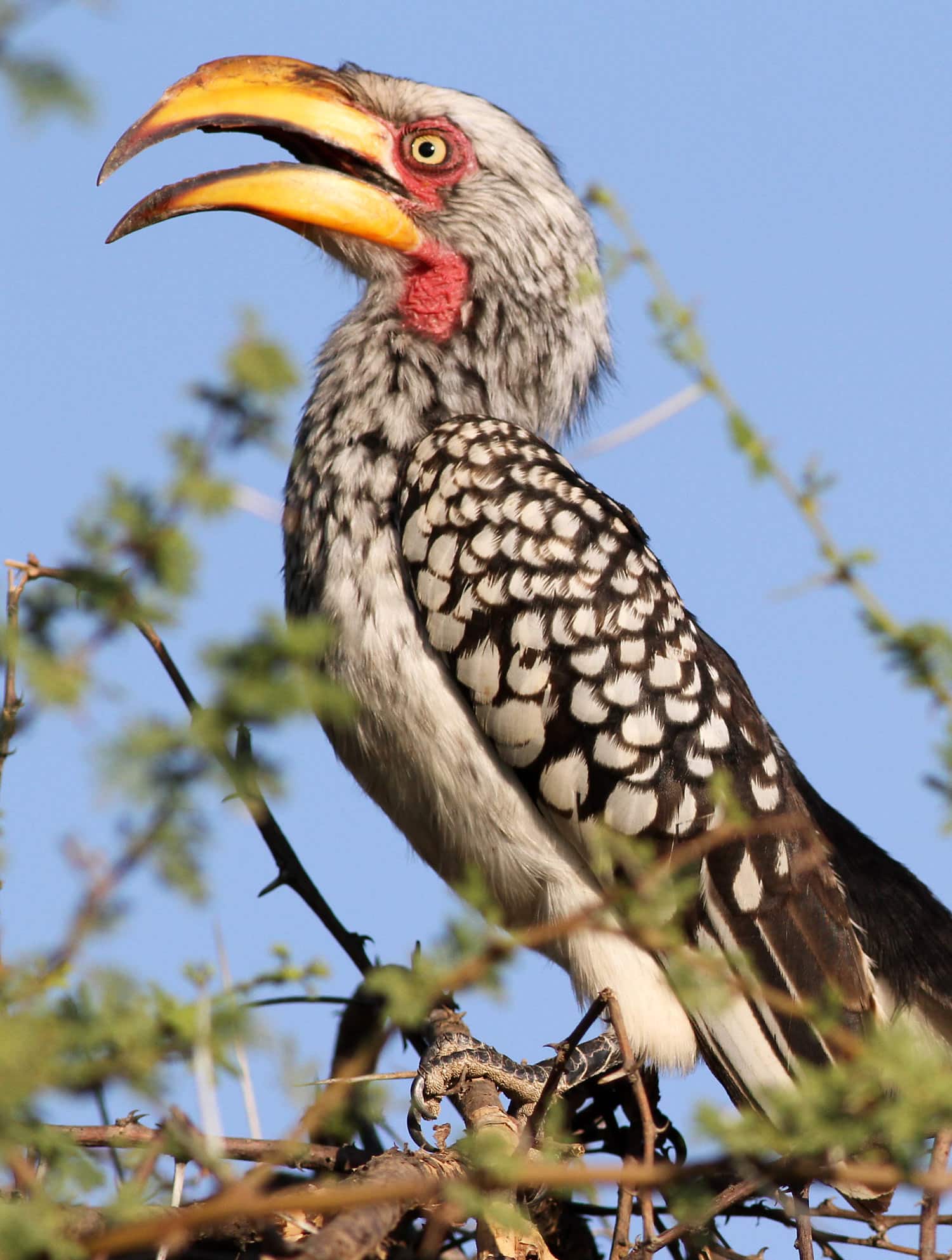
Reproduction is a significant aspect of the Southern Yellow-billed Hornbill’s life cycle. They construct their nests within tree cavities, lining them with dry grasses and leaves. The female lays around 3 to 4 white eggs inside the nest, where she diligently incubates them for approximately 25 days. During this period, the male provides nourishment for the female. After hatching, the chicks are fed by the female in the safety of the nest for three weeks, consuming regurgitated food. Subsequently, the female departs from the nest, and the young hornbills themselves reseal the hole. They spend an additional 40 to 45 days in the nest, receiving care and sustenance from both parents. Prior to taking flight, the fledglings perch on the nest site, fluttering their wings as they prepare for their first aerial adventures.
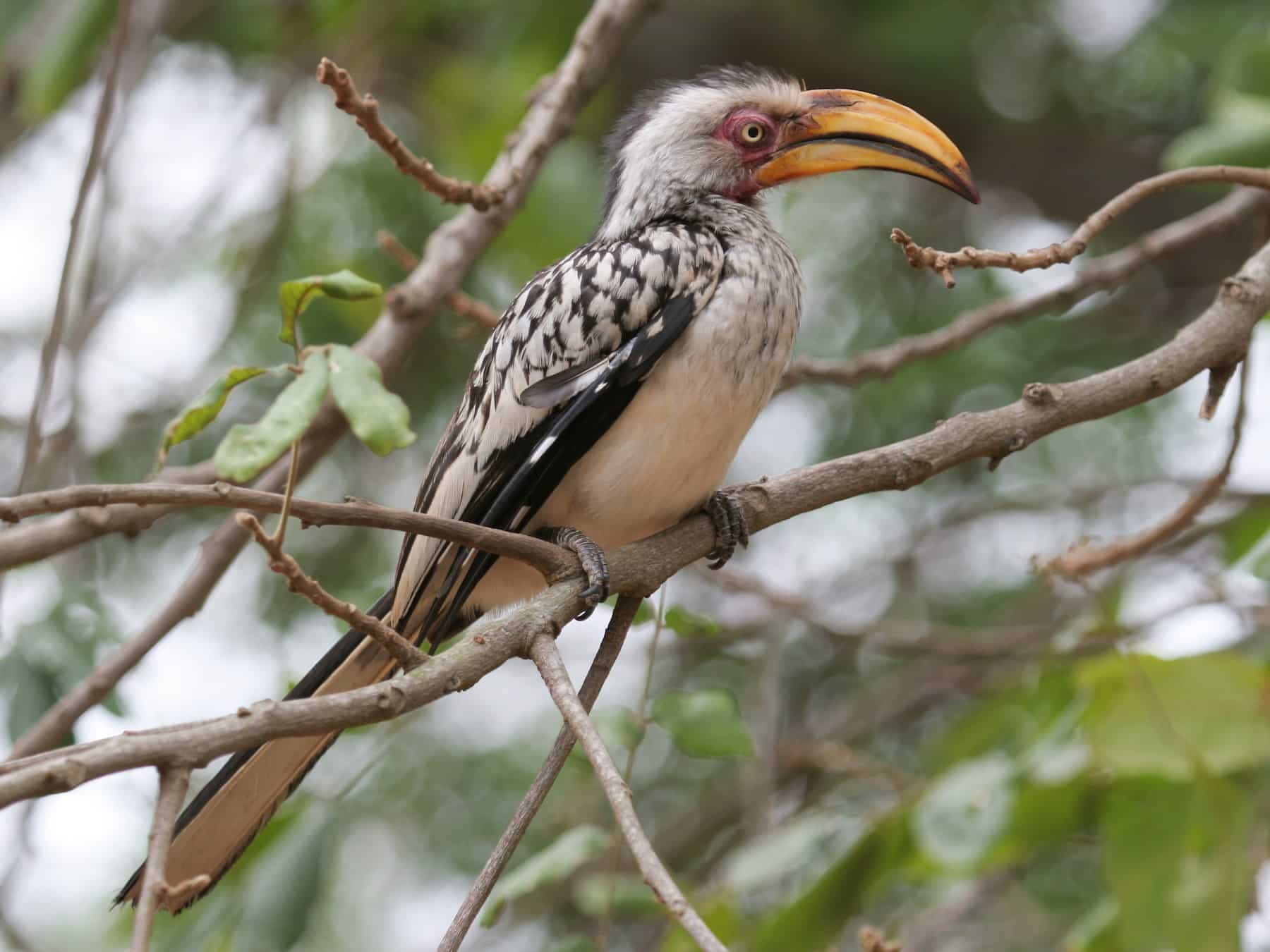
The Southern Yellow-billed Hornbill is not only a captivating species but also a common and widespread bird in South Africa, including the renowned Kruger National Park. Its presence in these regions contributes to the vibrant tapestry of biodiversity found in Southern Africa.
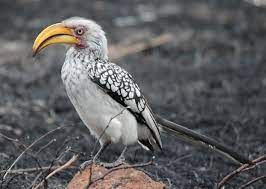
If you’re curious to observe and listen to the enchanting calls of this remarkable bird, we invite you to experience it firsthand. Watch the video below to witness the Southern Yellow-billed Hornbill in all its glory.
The Southern Yellow-billed Hornbill, often referred to as the “Flying Banana,” is truly a fascinating creature. Its vibrant appearance, unique bill, and remarkable behaviors make it a captivating subject of study for ornithologists and nature enthusiasts. So, keep an eye out for this remarkable bird during your next adventure in Southern Africa!
